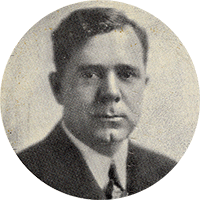In 1928, Louisiana had roughly 300 miles of paved roads, only 60 miles of which were maintained by the state. Most ‘highways’ linking major towns were rutted, winding dirt roads that turned to thick mud in the state’s frequent rains. Farmers struggled to get their crops to market, and it was common to wait days to travel until the roads dried out. Cars often became stuck in the mud, and it was common practice for travelers to prevail upon local farmers to pull their cars out with a team of horses or oxen.

Old roads versus new roads: Leesville-Alexandria dirt highway before Long; paved road near Lake Charles after Long's road-building program ~ Courtesy of the State Library of Louisiana.
It was a struggle for Louisiana’s 60 percent rural population to get anywhere, including to reach hospitals, schools, or a voting booth. Families had become accustomed to doing without.
The Long administration implemented an ambitious road-building program that employed 10 percent of the nation’s highway workers — 22,000 men. By 1932, the state had 5,000 miles of new paved and gravel roads. Four years later, there were 9,700 miles of new roads and 111 bridges, doubling the size of the state's highway system.
The new roads not only lowered the cost of doing business, but they saved the average driver more than $118 per year ($1,400 in today's dollars) in gasoline and maintenance. Trips that had previously taken days were reduced to a few hours. Travelers could drive from Shreveport to New Orleans in a day, a trip that had previously cost eight dollars in ferry tolls and three nights in hotels. (See sidebar about Airline Highway.)

Map of road construction progress during Huey Long's administration ~ Courtesy of the State Library of Louisiana.





